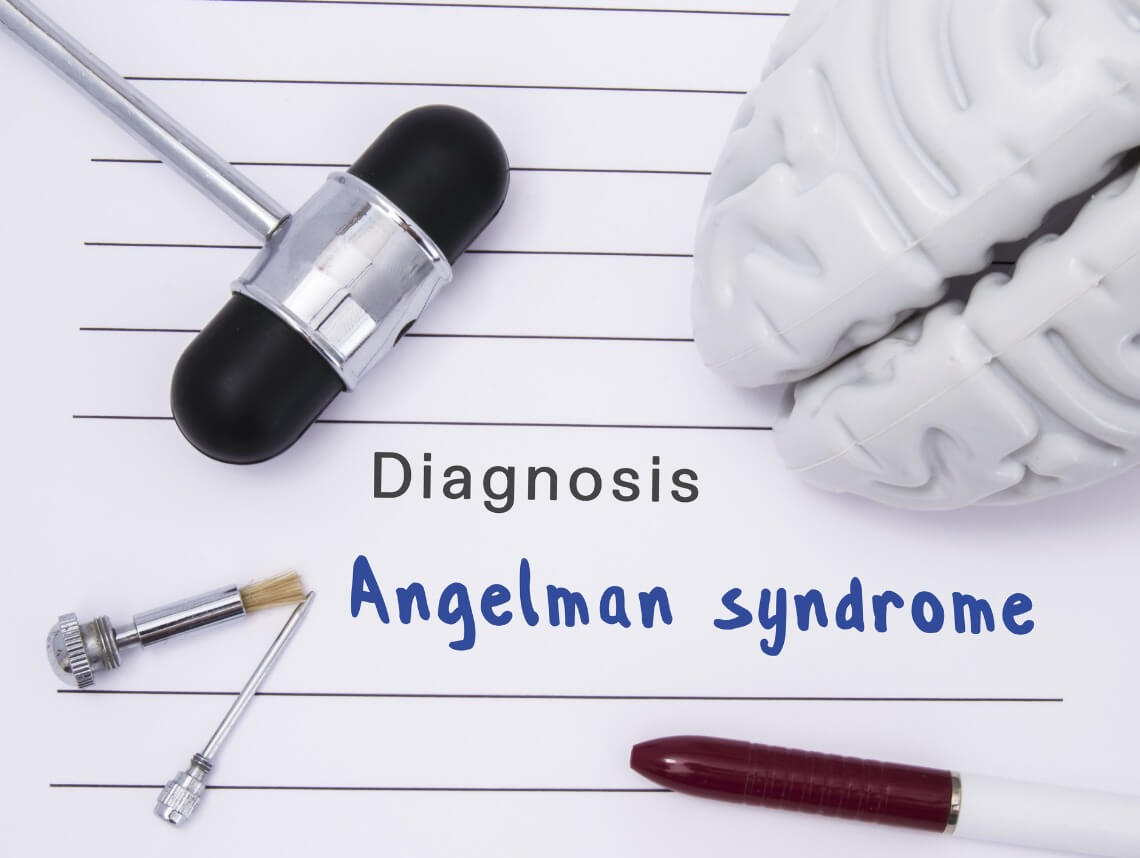Whenever anyone is diagnosed with a serious health condition, it’s common to feel helpless, overwhelmed, and frightened. And, when that diagnosis involves your child, it can feel like grief. Why is this happening? What caused it? And what’s the best way to treat the illness? Such is the case with Angelman syndrome (AS). While rare, it can extensively impact your child’s life.
What is Angelman Syndrome?
Angelman syndrome is a neurological genetic disorder that causes intellectual disabilities and developmental delays in children. In some cases, the child may also experience seizures. Children diagnosed with the condition tend to have a long life expectancy — comparable to those without the illness. It is also possible for symptoms to improve as the child gets older.
AS also has many shared characteristics with cerebral palsy, autism, and Prader-Willi syndrome — which often leads to a misdiagnosis. Symptoms usually begin to appear between six and 12 months of age.
Causes of Angelman Syndrome
Angelman syndrome is caused by a mutation in the ubiquitin-protein ligase (UBE3A) gene that causes a loss of function in the 15th chromosome. While there currently isn’t a cure for AS, there is a high likelihood of finding one — due to knowing its root cause. In fact, researchers have been able to reverse it in laboratory studies.
Angelman Syndrome Facial Features
Not all children with Angelman syndrome have evident facial features. However, in some cases, a child’s physical appearance may include a small head, deep-set eyes, wide jaw, pointed chin, hypopigmentation, and widely spaced teeth. It’s also common for these features to become more pronounced as the child grows up. Another unusual physical characteristic is that a child with AS may have blond hair and blue eyes even when nobody in their family has those features.
People with Angelman Syndrome often smile and laugh frequently, and have happy, excitable personalities. Individuals with Angelman Syndrome tend to live close to a normal life span, however the disorder cannot be cured.
Angelman Syndrome Symptoms
The symptoms of AS can vary from one child to another. The most common include:
- Lack of coordination
- Jerky movements
- Hand tremors
- Balance issues
- Gastrointestinal problems
- Little to no speech
- Tongue thrusting
- Sleep disorders (trouble going to sleep and staying asleep)
- Obesity
- Scoliosis
- Laughing and smiling frequently
- Walking with raised arms or with flexed wrists or elbows, also flapping of the hands.
- Hair, skin, and eyes that are light in color
- Attraction to water
Diagnosis and Treatment of Angelman Syndrome
If your child’s pediatrician suspects Angelman syndrome, they will run blood tests to detect genetic abnormalities. Additional testing may include a chromosomal microarray (CMA) to determine whether a portion of any chromosomes are missing, and DNA methylation to screen for genetic abnormalities specifically related to AS.
Treatment options include physical therapy to help your child with walking and coordination, communication therapy to teach them sign language and how to express themselves using pictures, behavioral therapy to help them focus, and anti-seizure medications.
Caring for a Child with Angelman Syndrome
1. Learn as Much as Possible About the Condition
Reading about the condition will help you understand why certain issues are occurring. You’ll also be able to better communicate with caregivers, as well as find out about support groups and clinical trials.
2. Establish a Team
Since your child will need so many different types of therapies to assist them with basic life skills, you’ll want to find a team of doctors and therapists with whom your child feels comfortable. Your team can also include supportive family members and close friends for their mental health needs.
3. Enlist Caregivers
Once diagnosed, the child will need life-long care. And, while you may have the best of intentions to always be there — from a practical standpoint — that won’t always be possible. Let family members or a home health caregiver help you.
4. Record Your Child’s Development
Note all symptoms you notice on a regular basis — as well as those that are appearing with less frequency. Write down for how long you’ve noticed the changes and bring the information to doctor’s appointments.
5. Bring a Loved One to Doctor’s Appointments
As a parent, it is common to feel so disconcerted about issues regarding your child’s developmental delays. Having a friend or family member accompany you means you will have someone who will stay focused in case you need a moment to regroup.
Contact Care Options for Kids for Home Health Care
It can be hard to balance your time between work, home, and caring for a child. That’s why our team of skilled professionals at Care Options for Kids are here to help.
Our home care services offer support in the comfort of your home. We refer loving and competent nurses to provide customized care for families — from a few hours a day to around-the-clock supervision. Contact us directly to speak with a home health care professional or request a free in-home assessment. Together we can determine the best plan of action to keep your loved ones happy and healthy.
If you are considering pediatric home health care services, contact the caring staff at Care Options for Kids. Call today (888) 592-5855.






